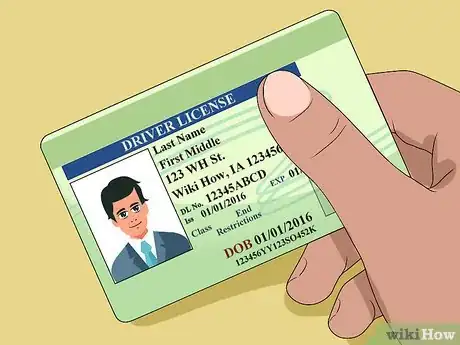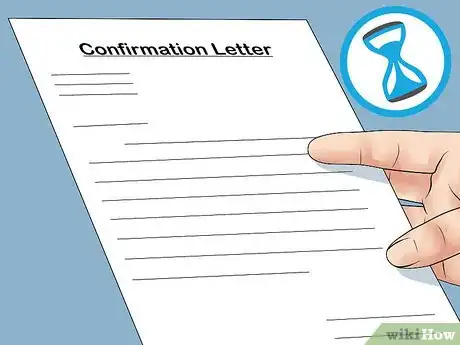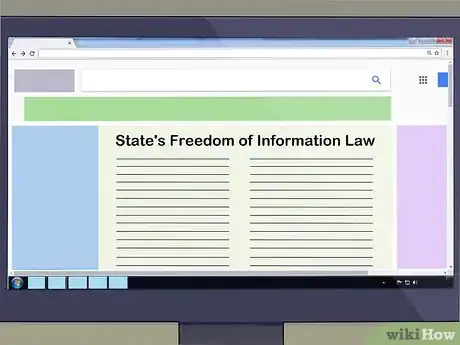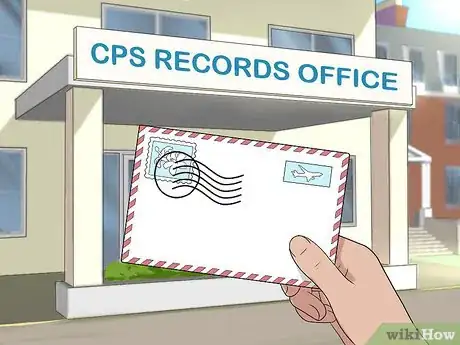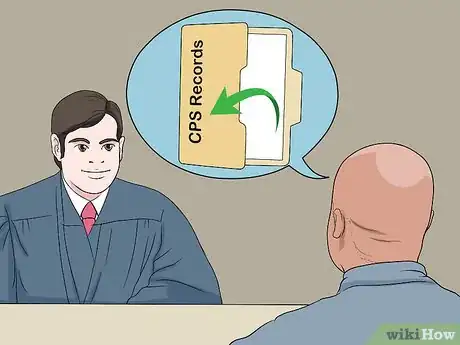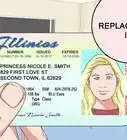This article was written by Jennifer Mueller, JD. Jennifer Mueller is an in-house legal expert at wikiHow. Jennifer reviews, fact-checks, and evaluates wikiHow's legal content to ensure thoroughness and accuracy. She received her JD from Indiana University Maurer School of Law in 2006.
This article has been viewed 134,068 times.
Federal law requires state child protective services (CPS) agencies to maintain records of all reports and cases they process.[1] Whether you can access these records depends generally on who you are and why you need them. If you were in foster care or were the subject of a CPS investigation, you have the right to get your own records. If you're seeking someone else's records, you may need to get a court order for those records to be released. Due to law requirements for confidentiality, usually you must have been involved directly with the case and the case must be closed.
Steps
Requesting Your Own Records
-
1Contact the agency that has your file. Each state agency has a different process for CPS records requests. For example, in New York if you are requesting records related to reports of child abuse or maltreatment (CPS/ACS records), send your request in writing to the New York Statewide Central Register of Child Abuse and Maltreatment (SCR) at the following address: SCR Service Center, P.O. Box 4480, Albany, NY 12204. A social worker at CPS will be able to tell you exactly what you need to do if you want copies of your own records.
- You also may be able to find this information on the agency's website. Do an internet search for "CPS" with the name of the state and city or county. That should bring up the right website. Click an "about" or "contact" link to make sure you're on the government site.
- Sometimes requests can be made by going to the social services offices in person, though you should check before you go.
-
2Write a cover letter if required. In some states, you may be required to submit a cover letter along with the standard request form. Even if it isn't required, it still may be a good idea to include a letter if you're mailing in your request.[2]
- Include your name and contact information in your letter, and describe the reason you're requesting a copy of your records.
Advertisement -
3Complete a request form. Each CPS agency has a standard form for you to use if you want to request copies of your own records. The form typically requires you to provide information about yourself and any adults listed in your records, such as your parents or a legal guardian.
- You may not know all the information requested on the form. For example, if one of your parents has not been a part of your life, you may not know their full birthdate. Only include the information that you know – don't guess.
-
4Submit your request form. Some states may allow you to submit a request form online, but typically you need to mail it in. This is because the agency requires an original signature on the request form.[3]
- Make a copy of your signed form for your own records before you mail it. Locate the address to mail the form on the form itself. It may also be in the instructions to complete the form, if there were any.
-
5Provide proof of identity. Most states restrict access to CPS records. Before they'll process your request, you must show them that you are legally entitled to a copy of your records. Typically you can do this by providing a photocopy of a government-issued photo ID, such as your driver's license.[4]
- Don't send originals of your identity documents – you won't get them back.
-
6Wait for confirmation. Once your request is received, CPS will send you a letter to let you know that they have your request. That confirmation may also include an estimate of when your records will be ready for you to view.[5]
- When you get your confirmation letter, file it away along with your copy of your request form. Make a note of the contact information provided and create a reminder on your calendar when your records will be ready.
-
7Follow up with your request. Some agencies will review your records before giving them to you. They may redact the records to protect the privacy of others who were mentioned in your records. This process can take several months to complete.[6]
- Make sure your contact information is up to date, especially if CPS will be mailing you copies of your records. You can typically call or email CPS if you need to update your mailing address or phone number.
- If several months pass and you haven't heard anything regarding your request, call CPS and ask about the status of your request. Take down the name and job title of the person you talk to in case you have to call again.
Filing a Freedom of Information Request
-
1Read your state's freedom of information law. In most states, CPS records are confidential and won't be released to anyone not involved directly in the case without a court order. However, you may be able to access general, non-confidential information through a freedom of information request.[7]
- You may also be able to access the information if you are involved with the children or adults involved in the case. For example, a child's psychiatrist or counselor may be able to access records regarding that child's history of abuse.
- The federal Children's Bureau has a summary of the laws regarding the release of CPS records for all 50 states available at https://www.childwelfare.gov/pubPDFs/confide.pdf.
-
2Send a letter to the CPS records office. While state freedom of information laws vary, they all require requests made under the law to be made in writing. Some states may have a specific form for you to fill out.[8]
- If there isn't a specific form, the state law will lay out exactly what information should be included in a freedom of information request. Generally, be as specific as possible about the records you want and the reasons you want them. Make sure your reasons are allowed by the state law.
- Check the CPS website to find out where to mail this request. Make a copy of your letter for your own records before you mail it.
-
3Receive your acknowledgement letter. When the CPS records office receives your request, they'll typically send you a letter confirming that receipt. If your request is denied, this letter may give you the reasons for the denial and explain what you need to do next.[9]
- If your request is accepted, your acknowledgement letter typically will give you a rough estimate of when the records you requested will be available for you to view and copy.
-
4View the records you requested. It may take several months for records to be made available to you through a freedom of information request. When they are available, CPS typically requires you to take a trip to the CPS office to view them in person.[10]
- There usually is a fee to view records obtained through a freedom of information request. Because of the confidentiality concerns with CPS records, copying these records may be restricted. Bring along paper and pen in case you can't make copies, so you can take notes.
Getting a Court Order
-
1Evaluate your state's legal requirements. In some situations, you may only be able to get CPS records if you have a judge issue a court order after a full hearing. Your state's law will describe situations in which a court order is required.[11]
- For example, if you were adopted through the state CPS system, your adoption records may be sealed. To learn the identity of your birth parents, you would have to apply for a court order in the circuit court of the county where the agency responsible for your adoption is located.
-
2Draft a petition for a court order. A motion, application or petition for a court order to open or unseal CPS records can be made by any person or entity who wishes to do so. Many states have forms you can use for this purpose. [12] However, the process may vary substantially from state to state and you should consider getting a lawyer to help you with the process.
- Search for your state court's website online – they may have forms available that you can download. You can also ask about forms at the clerk's office of your county court.
- Make at least 2 copies of your petition after you've completed it. You'll need one for your records and one to serve on the agency.
-
3File your petition with the appropriate court. Take your petition and copies to the clerk's office in the circuit or county court where the CPS agency office is located. You'll have to pay a filing fee – typically under a few hundred dollars. The clerk may have a fee waiver application if you can't afford the filing fee.[13]
- The clerk will keep the originals for the court records and give the copies back to you. One of those copies must be delivered to the CPS agency that has the records you want.
-
4Have the CPS agency served. The agency must have notice that you are seeking a court order to release records. A social worker from CPS may appear in court to argue against the release.[14]
- Typically you can complete service by mailing a copy of the petition using certified mail with return receipt requested. You could also hire a sheriff's deputy or private process serving company.
- Depending on the type of records you want to get and why you want to get them, the court may tell you to serve other people or agencies. For example, if you want to open adoption records, you may be required to serve your birth parents. Since you don't know who they are, CPS would be in charge of notifying them.
-
5Attend your hearing. The judge will schedule a hearing on your petition if there is opposition to your request. If CPS approves of the release of the records, the judge may issue the order without a hearing.[15]
- If you have to appear in court, arrive at least a half hour early. You'll need time to get through security at the courthouse and find the right courtroom. When you get to the courtroom, take a seat in the gallery until your name is called.
- Bring documents and information you have that support your argument for access to the CPS records.
-
6Explain to the judge why you want the records opened. Since you filed the petition to initiate the court proceedings, the judge will speak to you first. Using a clear, loud voice, tell the judge your reasoning and factual basis for wanting to view the CPS records.[16]
- If a representative from CPS, or anyone else, is there to oppose your petition, the judge will hear from them next. You may be allowed to ask them questions, but don't interrupt them or speak to them directly. If you want to ask them questions, get permission from the judge.
-
7Listen to the judge's decision. After the judge has heard from everyone present, they will let you know whether they've decided to issue an order. If they deny your petition, they'll likely tell you why and let you know what your options are if you still want to pursue release of the records.[17]
- Once the judge issues the order, take it to CPS to begin the process of getting the records you requested.
References
- ↑ https://www.childwelfare.gov/pubPDFs/confide.pdf
- ↑ http://www.texasfosteryouth.org/downloads/obtaining_your_cps_records.pdf
- ↑ http://www.texasfosteryouth.org/downloads/obtaining_your_cps_records.pdf
- ↑ https://dss.mo.gov/dls/requesting-personal-information.htm
- ↑ http://www.texasfosteryouth.org/downloads/obtaining_your_cps_records.pdf
- ↑ http://www.texasfosteryouth.org/downloads/obtaining_your_cps_records.pdf
- ↑ https://www.childwelfare.gov/pubPDFs/confide.pdf
- ↑ https://ocfs.ny.gov/help/foil/
- ↑ https://ocfs.ny.gov/help/foil/
- ↑ https://ocfs.ny.gov/help/foil/
- ↑ https://www.childwelfare.gov/pubPDFs/infoaccessap.pdf
- ↑ https://www.utcourts.gov/howto/family/adoption/records/
- ↑ https://www.utcourts.gov/howto/family/adoption/records/
- ↑ https://www.utcourts.gov/howto/family/adoption/records/
- ↑ https://www.utcourts.gov/howto/family/adoption/records/
- ↑ https://www.utcourts.gov/howto/family/adoption/records/
- ↑ https://www.utcourts.gov/howto/family/adoption/records/
About This Article
Child Protective Services, also known as CPS, maintain records on all the cases they process. To obtain CPS records, start by filling out a request form, which you can find on the agency's website. The request form can be submitted online in certain states. But if your state doesn't have that option, you can print the form and mail it to your state's agency office. You’ll also need to include a photocopy of your ID with the form for it to be approved. You should receive a letter in the mail notifying you if your request was confirmed or denied. If it was confirmed, you’ll also receive a time estimate for when the records will be ready to view. To learn how to file a Freedom of Information Request with CPS, read more from our Legal co-author.




